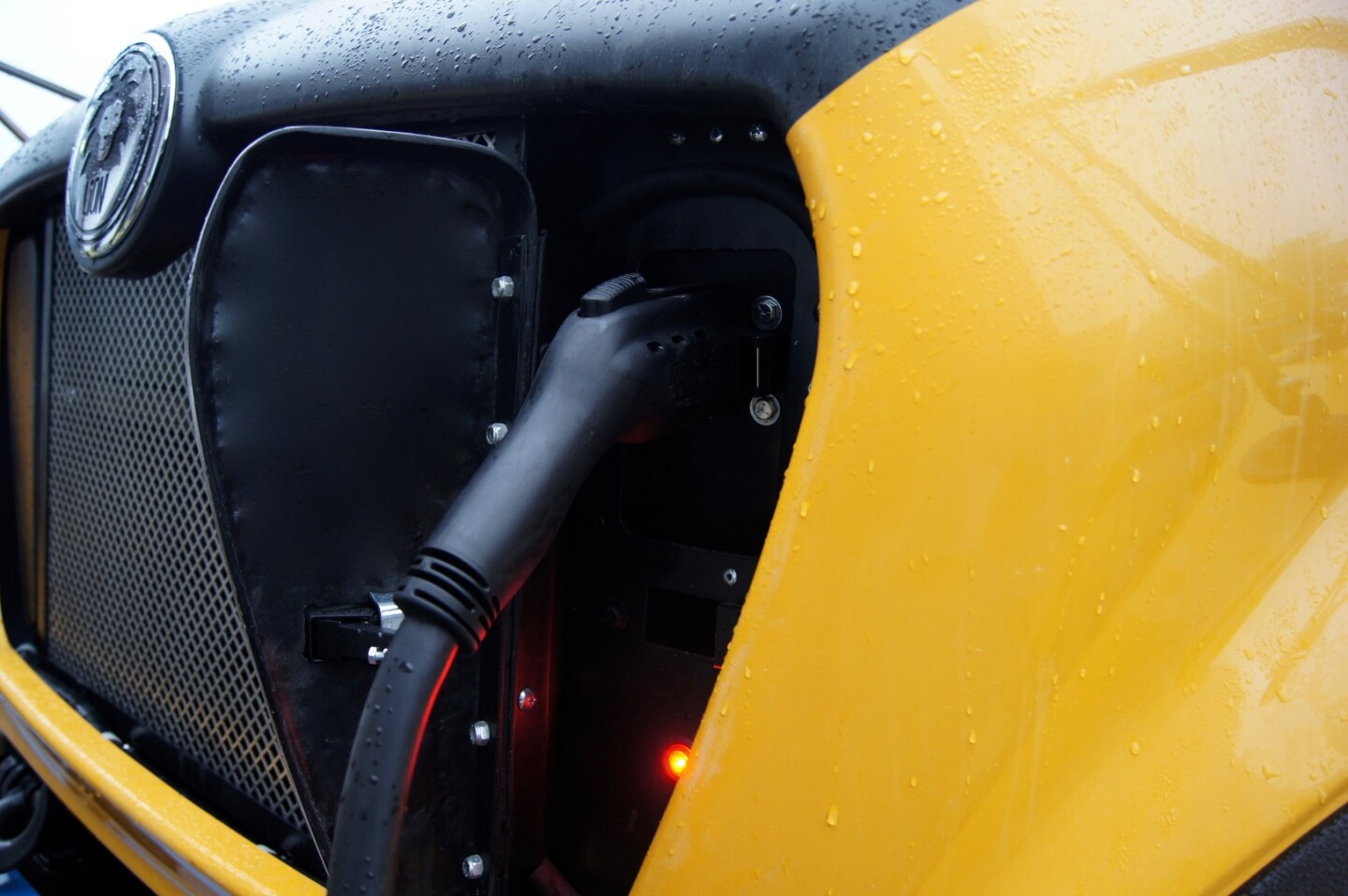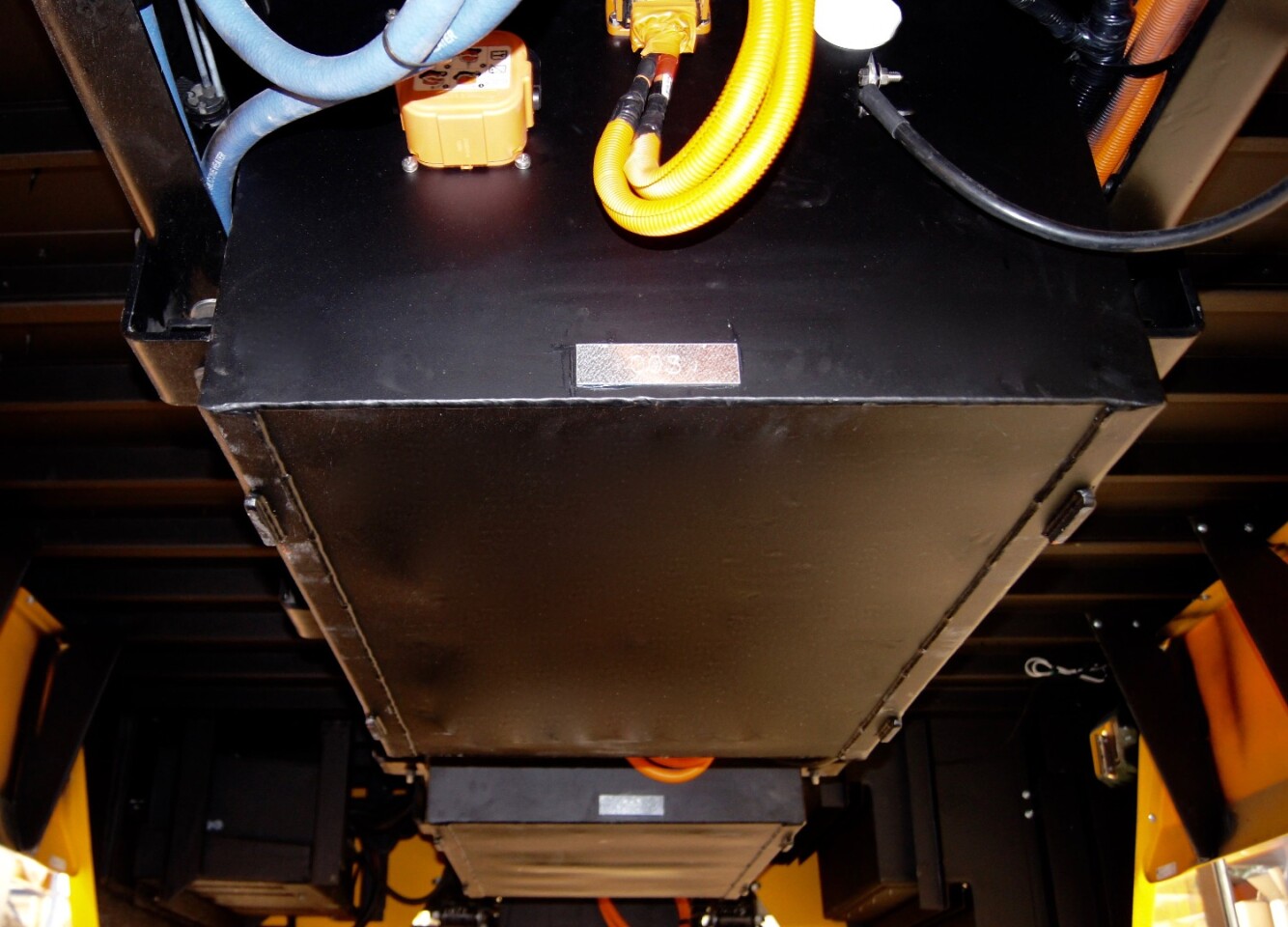California is once again getting an electric school bus, and this time it's a full-size Type C. One of the fruits of the carbon market cooperation between Québec and California, the all-electric eLion from Québec's Lion Bus quietly navigates local streets without leaving a heavy cloud of diesel fumes in its wake.
Lion Bus traveled from one "ca" to another on Wednesday, holding an official eLion unveiling in Palo Alto, California in conjunction with government officials from both California and Québec. The bus was created with help from the two regions' unique cooperative cap-and-trade programs.
Billed as the only electric Type C school bus built in North America, the eLion looks pretty much like the typical big, yellow school bus, albeit with a more modern face. Below its long, yellow shell, though, the eLion loses the typical diesel powertrain in favor of a TM4 electric motor wired to three to five battery packs. Three battery packs power the bus for up to 50 miles (80 km); four packs go 75 miles (121 km); and five packs bring it up to 100 (161 km).
The standard 19.2-kW onboard charger gets the three packs charged in around 3.9 hours, four packs in 5.2 hours and five packs in 6.5 hours. Lion also plans to launch a fast charger option later this year, bringing times down to between 1.5 and 2.5 hours.

Lion says that the eLion has power comparable to a diesel bus, along with the ability to climb 20 percent grades. Meanwhile, the company says operators can save up to US$13,000 a year on fuel costs and $3,000 on maintenance, seeing a return on investment in six years.
The immediate advantage for communities looking to invest in electric school buses, though, is zero emissions, and not just the "halting climate change to save the world" kind, but also the "preventing our children from having to choke on diesel fumes in order to attend school" kind.
I haven't had to ride the school bus in over 20 years, but all I have to do to re-experience the thick, semi-sweet taste of school bus exhaust is close my eyes and imagine walking around my junior high school parking lot. Instantly, the taste is there again.
Huffing school bus-size clouds of diesel isn't a pleasant experience for anyone, but it's especially hard on children, who have faster breathing rates and still-developing lungs. The more children who are able to go through their school years without breathing that exhaust every day, the better.

Lion's Palo Alto event wasn't a world premiere, as the company actually began commercializing the eLion about a year ago and has since delivered more than 50 buses to school districts and private contractors, according to company president Marc Bedard. Yesterday's unveiling was more ceremonial, with the focus of the event on announcing Lion's planned manufacturing facility in California.
The site for Lion's new plant has not yet been identified, but the state of California intends to help the company find the right location. Bedard says Lion will invest in the facility over the next four years and split production of its expanding lineup between the new plant and its Québec facility. In addition to the eLion, that lineup will include an electric mini-bus and electric trucks of various classes.
Source: Lion Bus, California GO-Biz via AutoBlog








